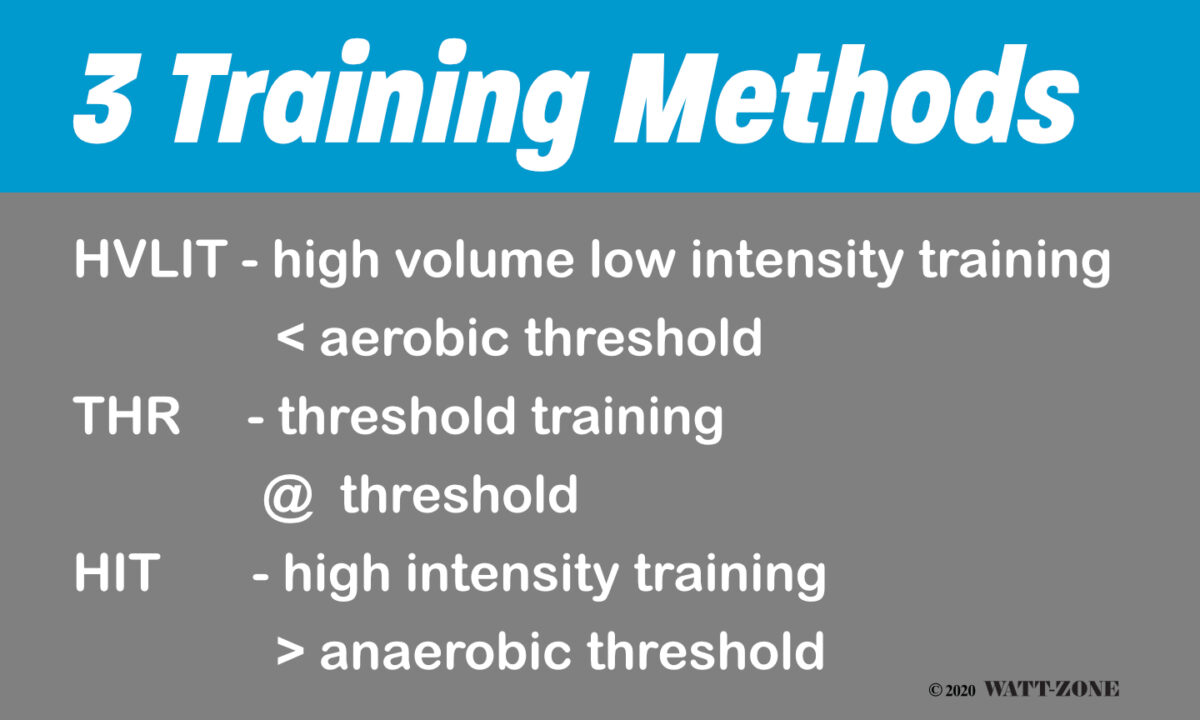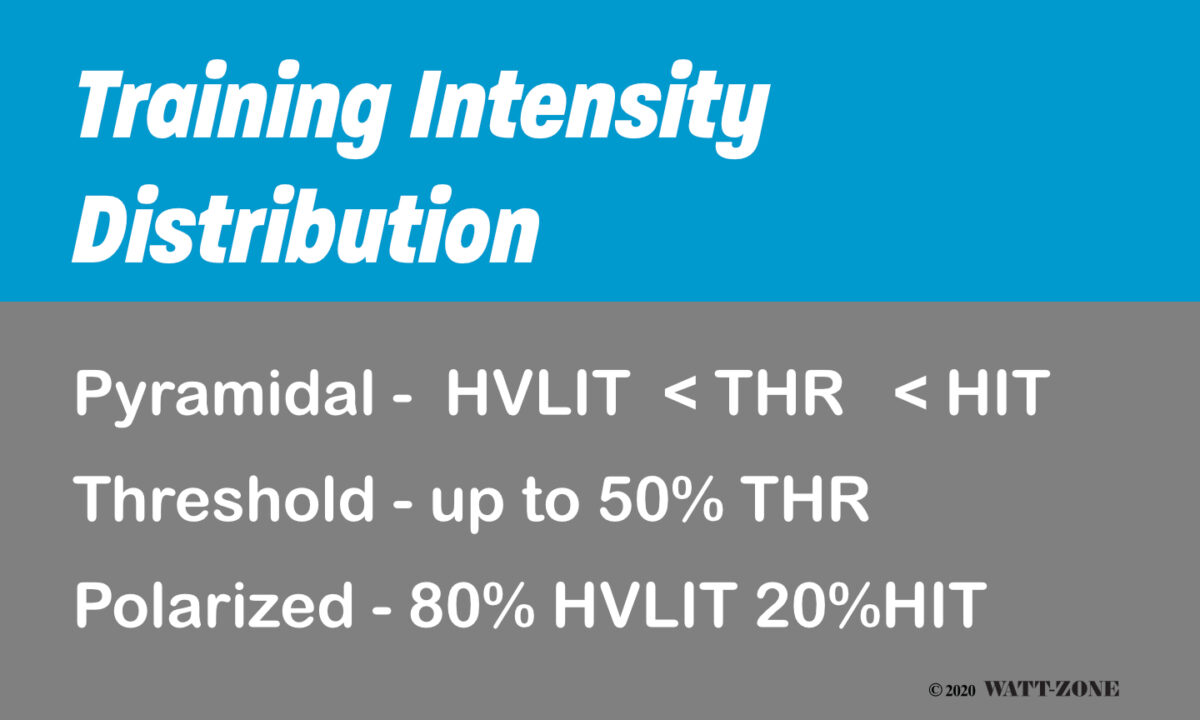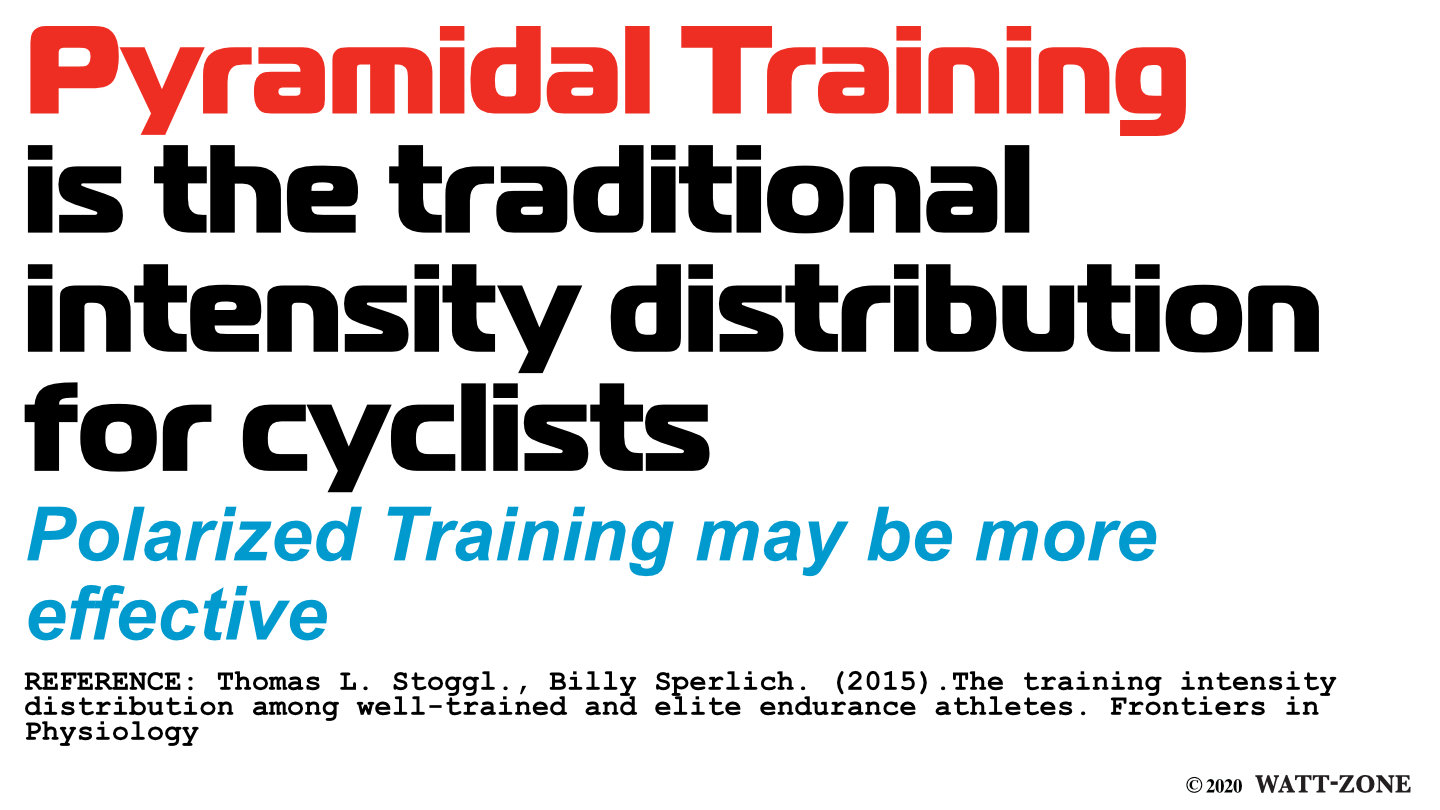In 2015, Thomas L. Stoggl and Billy Sperlich, presented a review of existing research related to Training Intensity Distribution (TID). The paper focused on a 3 training zone model acknowledging three major training methods:
- High volume low-intensity training (HVLIT): “zone 1” low-intensity training below aerobic threshold.
- Threshold training (THR): “zone 2” training performed mainly at an intensity between the aerobic threshold and the anaerobic threshold.
- High-intensity training (HIT): “zone 3” training above the anaerobic threshold.

Three TID models were defined;
- Pyramidal training: the majority of training as HVLIT, with decreasing proportions of THR and HIT respectively,
- THR emphasized: HVLIT is the base with up to 50% THR training being the focus, with little to no HIT. THR has become popular in cycling in the last 10 years,
- Polarized Training (POL): training with significant proportions of both HVLIT and HIT (approximately 80%, 20% respectively), with little to no THR.

Retrospective analysis of the TID of nationally and internationally competitive cyclists revealed that a Pyramidal approach was predominant.
Importantly, no matter what phase of training a cyclist was in at least 70% of their time was spent on HVLIT. From base periods training progressed from almost 100% HVLIT to Pyramidal competition phases with HVLIT being 70%. This is not surprising given that Pyramidal training is the traditional model.
In more recent times THR emphasised training, and POL have gained a lot of attention. When looking at randomized controlled studies it was recognised that:
- THR emphasised training may be beneficial for beginner and recreational cyclists.
- It is also recognized that overdoing THR training will not lead to further improvements in fitness.
- Polarized training is shown to be more effective than Threshold training for key cycling performance parameters.
- Runners who prioritized HIT over THR have been reported to perform better.
The conclusions:
- each TID has a place,
- and it’s place is dependent of the athletes status – beginner to pro,
- and the stage the athlete is in, in their periodised plan
In a controlled environment, such as rowers a may experience, a POL TID may be optimal. Cycling lends itself to a Pyramidal TID because in general racing demands efforts at all intensities. Perhaps Polarised Training shifting to Pyramidal prior to competition may be most effective.
REFERENCE: Thomas L. Stoggl., Billy Sperlich. (2015).The training intensity distribution among well-trained and elite endurance athletes. Frontiers in Physiology

